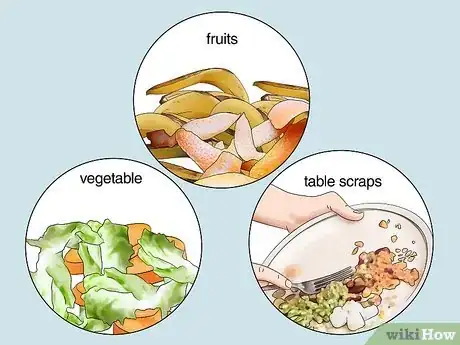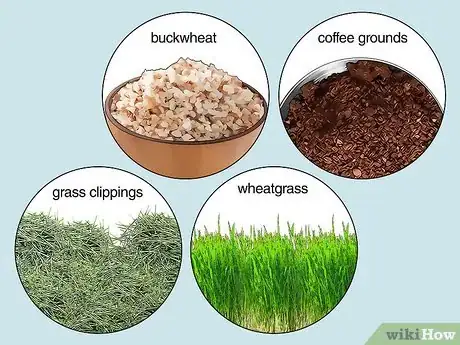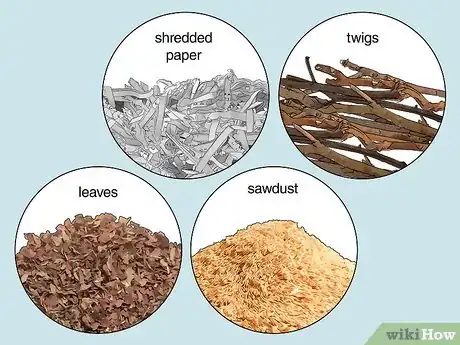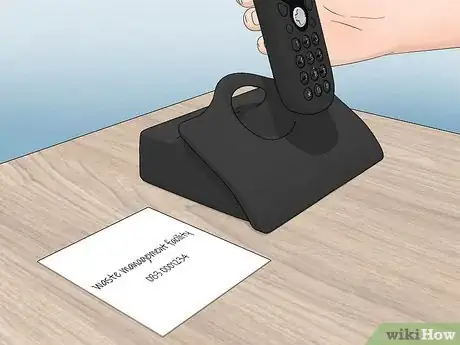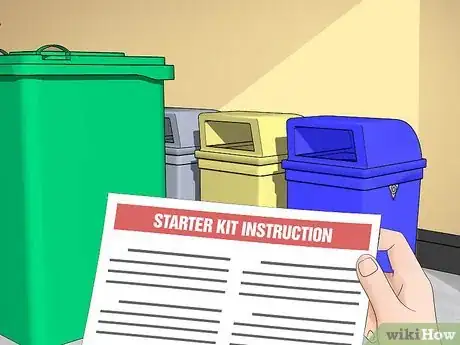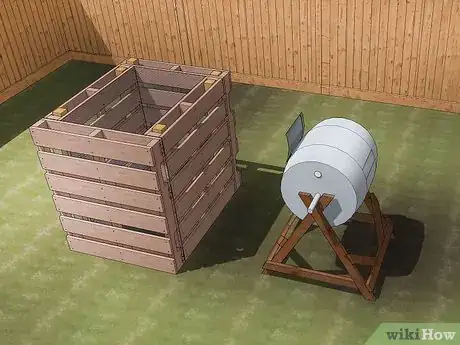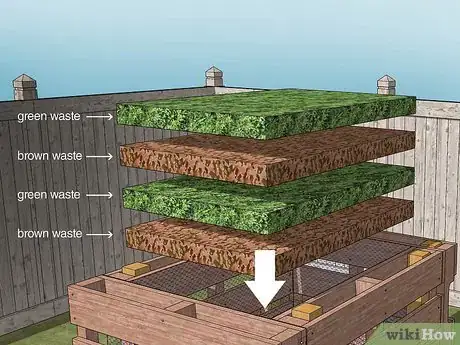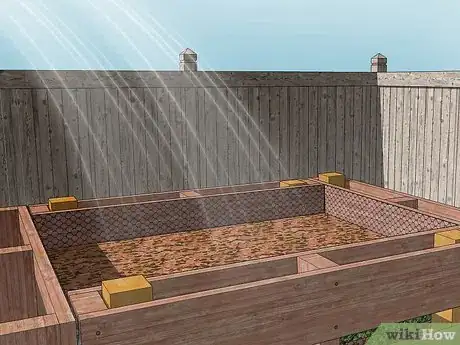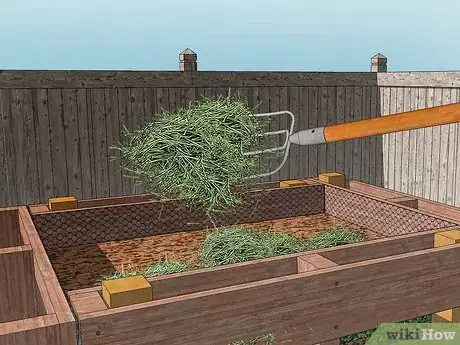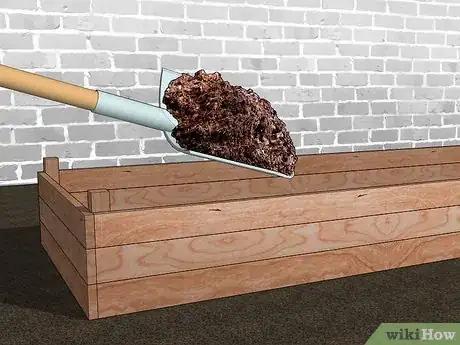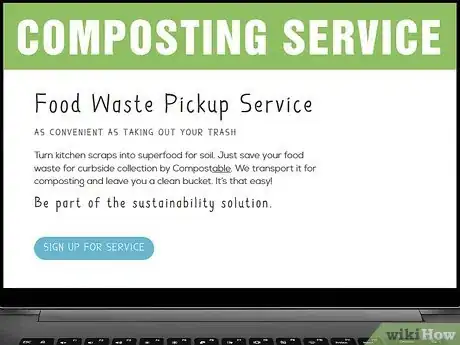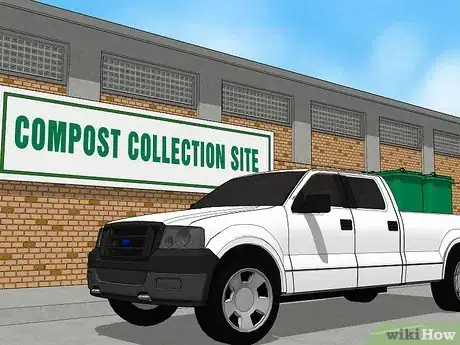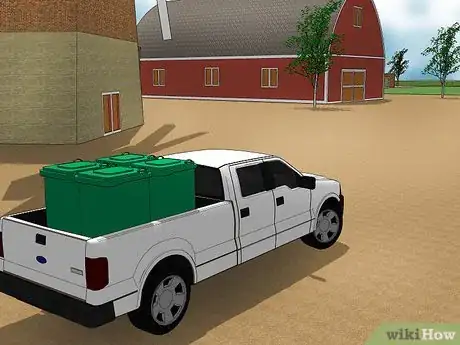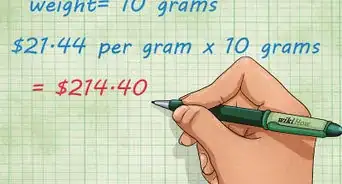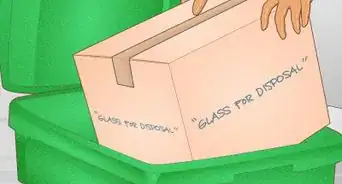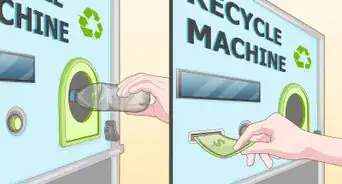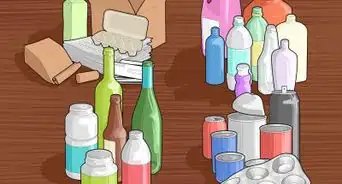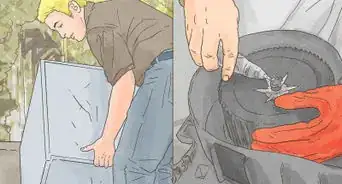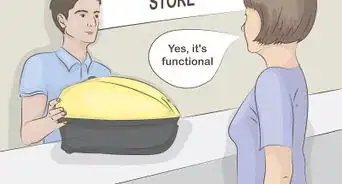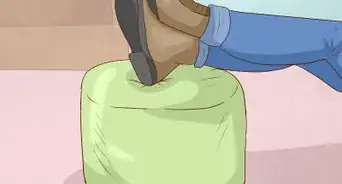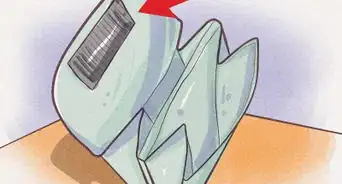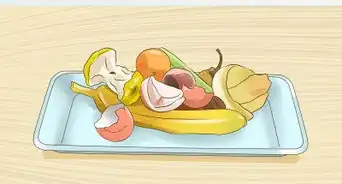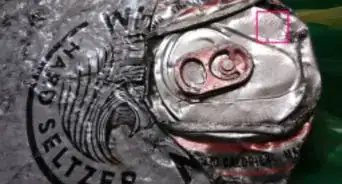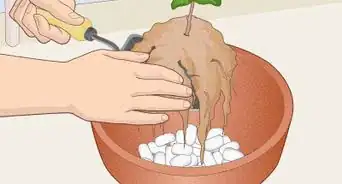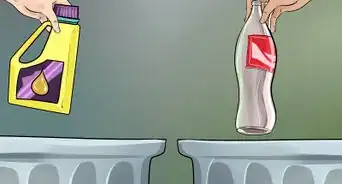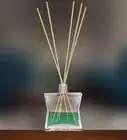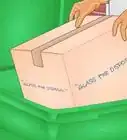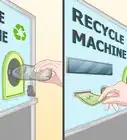This article was co-authored by wikiHow Staff. Our trained team of editors and researchers validate articles for accuracy and comprehensiveness. wikiHow's Content Management Team carefully monitors the work from our editorial staff to ensure that each article is backed by trusted research and meets our high quality standards.
There are 15 references cited in this article, which can be found at the bottom of the page.
This article has been viewed 178,781 times.
Learn more...
Biodegradable waste is animal or plant matter that breaks down naturally with exposure to microorganisms, heat, and oxygen. Recycling biodegradable waste into a nutrient-rich, usable material is often called composting. The material created through composting can later be added to soil. Since it is not always convenient to compost your own organic waste at home, public services and private organizations are now making it easier than ever for urban and suburban residents to recycle their biodegradable materials.
Steps
Collecting Biodegradable Materials
-
1Gather organic food waste and scraps. Collecting compostable material requires little additional work—you simply place organic items, such as food waste and scraps in a collection container separate from your trash can. While you may purchase a designated indoor compost bin, many people collect their food scraps and waste in repurposed plastic food containers, trash cans, or compostable bags. After preparing or eating meals, place your food scraps into a compost collection bin.
- Acceptable items include table scraps, fruit, vegetables, and eggshells. These items are considered “green” waste as opposed to “brown” waste.
- If you are participating in a public or private program, only place approved compostable materials in your bin.
- If you are composting in your backyard, do not save meat and fish products for your compost pile—these items attract rodents and pests.
- Store your collection bin under the kitchen sink, on the kitchen counter, in your fridge, or in your freezer.[1]
-
2Collect green manure. If you are composting in your backyard, your pile should include about 50% green waste or manure. These items, which introduce nitrogen into your pile, serve as a catalyst to the compost process. Table scraps and food waste are just two forms of green manure. Other green waste items include:
- Grass clippings
- Clover
- Buckwheat
- Wheatgrass
- Coffee Grounds
- Tea leaves or tea bags
- Store these items in an outdoor yard waste bin.[2]
Advertisement -
3Set aside brown waste for your compost pile. Brown waste should make up the other 50% of your compost pile. The brown waste adds carbon to your compost pile. You may find brown waste items both inside your home and outside in your yard. These items include:
- Shredded newspaper
- Shredded paper
- Shredded brown paper bags
- Dead branches
- Twigs
- Leaves
- Straw
- Untreated sawdust[3]
Participating in a City Composting Plan
-
1Contact your city's waste management facilities. Cities across Europe and the United States have committed to reducing or eliminating their residents' waste. In an effort to achieve this goal, these cities have established curbside composting programs. For more information on your community’s public program or to determine if your city provides this service, call your city’s waste management facilities of visit its website.
- Inquire about the cost of the service.
- Ask if the city provides indoor and curbside collection bins.
- Ask how frequently the city picks up compostable material. Do they collect it twice a week, once a week, every two weeks, etc.?[4]
-
2Sign-up for your city’s composting program. When you contact your city's waste management facilities or search its website, inquire about or look for instructions on signing-up for the service. Every city’s sign-up process will be slightly different. To join the program, you may need to fill out an online form or send in a paper copy of the contract.[5]
- Before opting into the city program, renters, especially those in apartments, should contact their landlords.
- If your building already participates in the city’s program, your landlord may be obligated to provide you with all of the necessary equipment and information. They may also be required to provide tenants with a central composting location.[6]
- If your complex is not currently involved in the municipal composting program, head up the initiative to join the composting movement.
-
3Receive a composting starter kit and guidelines. Once you have joined the program, your local municipality may provide you with the equipment and educational resources you need to start composting. The equipment provided may include an indoor collection bin, an outdoor bin, and/or compostable bags. The city may also provide you with a set of instructions, a list of approved biodegradable materials, and a list of unaccepted organic materials.
- The indoor collection bin is typically intended for your kitchen. Many people store this bin under the kitchen sink or on their kitchen counter. Line your inside bin with a compostable bag, newspaper, or a brown paper bag to keep it clean. If you are concerned about the smell or mess, you may also freeze or fridge all of your compostable food materials.[7]
- The outdoor collection bin is emptied by city workers. If you live in an apartment building, you may be required to share this outdoor collection bin with other residents.
- If the city does not provide an indoor composting bin, you can find composting containers at many kitchen supply stores or purchase one online. You can also use takeout containers, food containers, pails with lids, or lined trash cans with lids.
- Read the guidelines for your city's composting program. Make note of the correct procedures and your city’s approved compostable materials.[8]
-
4Collect your compostable materials throughout the week and place them outside on collection. Throughout the week, place your organic materials into your indoor compost bin. You can also collect biodegradable materials in your home office, bathrooms, and bedrooms. When your biodegradable collection bins are full, add the contents to your outdoor compost bin. On your a designated compost pick-up day, leave your outdoor bin at the curb each week. Once the bin is emptied, bring it in from the curb.
- Your city may have specific requirements regarding the placement of the pin.
- If you live in an area that receives a lot of snow, you may have to shovel a path from the street to your bin.
- Officials may contact you if you fail to comply with the city’s procedures and rules.[9]
Composting Your Biodegradable Waste at Home
-
1Select a composting container. In order to compost in your backyard, you need to build or purchase a composting container. This container should be placed in a shady location that is near a source of water. Types of containers include:
- Homemade Containers: Construct your own round or square composting container out of fence posts and wire mesh siding, fence posts and lattice, or brick and wood. Build a structure that is at least three feet wide and three feet deep.[10]
- Compost Bins: This product, also known as a compost digester, is enclosed on the top and sides. Its open bottom sits directly on the ground. While these bins are small and inexpensive, it is difficult to turn the compost pile inside of them.
- Compost Tumblers: These rotating composting containers are the most effective and mobile bins on the market. The rotating drum makes it easy to turn and aerate the compost. The drum also serves as insulation, which keeps the composting materials at the ideal temperature year round. The center paddle helps to aerate the compost and prevents the materials from clumping.[11]
-
2Layer your organic materials inside the container. Begin your compost pile in late spring or summer when it is hot and slightly damp. Organic materials must be placed thoughtfully and carefully in the compost pile. A well laid out compost pile will promote drainage and aeration while deterring clumping and rotting. Place your biodegradable materials in thin, even layers.
- Place brown waste, specifically twigs and straw, on the bottom of the pile to encourage drainage. This layer should be a few inches thick.
- Add alternating layers of moist and dry green and brown waste. Keep this layers thin to avoid clumping. Moist items include food scraps, food waste, coffee grounds, and tea bags. Dry items include straw, twigs, leaves, and untreated sawdust.[12]
-
3Maintain a moist, covered, and well turned compost pile. In order for the microorganisms to breakdown the green and brown waste into compost, the pile must remain moist, warm, and well aerated. Monitor your pile frequently.
- Your compost should maintain the moisture of a damp sponge. If it is too dry, add water to the pile with a hose or let the rain water it naturally. If it is too wet, your organic materials may rot instead of compost.
- Your compost pile should retain an interior temperature between 135° to 160° F. You can monitor the temperature with a thermometer. Covering your compost pile with a lid, carpet squares, wood, or a tarp will help regulate the temperature of the pile.[13]
- In order for the compost process to work, your pile must have a sufficient amount of air. Add oxygen to your pile by turning it every two to four weeks. You can turn the pile with a pitchfork or rotate your compost tumbler.[14]
-
4Add green manure and bury new materials ten inches down and turn the compost. When your compost pile is well developed, you can introduce new green waste and green manure to the compost. These products add nitrogen to the pile. The nitrogen serves as a catalyst for the composting process.
- Use a pitchfork to add and mix in green manure to your pile. Acceptable green manure items include grass clippings, buckwheat, wheatgrass, and clover.
- Bury new vegetable, fruit, and food scraps at least ten inches below the top of the pile.[15]
-
5Add the finished compost to your garden. Once the material at the bottom of your pile is a rich dark brown, the compost is ready for use. This can take anywhere from two months to two years.
- Open up your composting container and empty its contents onto the ground.
- Add the compost to your garden, vegetable patch, or orchard.[16]
Exploring Alternative Methods of Recycling Your Biodegradable Materials
-
1Subscribing to a private composting service. If your city does not offer a public composting service, search for a private composting business in your area. Select a business and a plan that is within your price range, meets your needs, and fits into your schedule. Once you sign-up for the service, the business will typically provide you with a composting bin or bags.
- Many services will take the full bin and leave you with a sanitized bin.
- If you do not produce much food waste, find a service that will pick up your compostable materials every two weeks or once a month.
- If you are interested in using compost in your yard, select a service that provides you with compost for free or at a discounted rate.[17]
-
2Bring your compostable materials to a composting collection site. Instead of paying for a public or private composting service, bring your organic materials to a designated biodegradable waste drop off site. These sites may be operated by the city, private organizations, or nonprofits. Before bringing your materials to one of these locations, make sure all of the items in your compost bin or bags adhere to the site’s standards.
- Find these drop off sites through a quick internet search.
- Instead of paying for your city’s composting service, you may be allowed to bring biodegradable materials to a drop-off site yourself.[18]
-
3Donate your organic materials to local farmers or community gardens. Giving your biodegradable materials away is an excellent ways to support the farmers and systems that produce food for your community. Contact farmers and community gardens in your area to see if they accept organic donations.
- This is a great option for business and restaurants looking to cut costs while giving back to the community.
- Some farmers and gardens may already have drop off boxes for composting donations.
Community Q&A
-
QuestionHow would I obtain energy from biodegradable waste in a sustainable way?
 Community AnswerFirst, you need to know if the waste is consistently non-hazardous. Second, you need to know what form it's in: solid, semi-solid, or liquid. Third, you need to know if the waste has any calorific value. Once these things are known, you need to find appropriate channel to harness the energy from it. (For example, the incineration of solid waste generates heat.)
Community AnswerFirst, you need to know if the waste is consistently non-hazardous. Second, you need to know what form it's in: solid, semi-solid, or liquid. Third, you need to know if the waste has any calorific value. Once these things are known, you need to find appropriate channel to harness the energy from it. (For example, the incineration of solid waste generates heat.) -
QuestionHow can I find out how non-biodegradable products were composed?
 Community AnswerYou can know the composition of non-biodegradable substances and compounds by using chemical testing or carbon dating. Also, try chemical journals and encyclopedias.
Community AnswerYou can know the composition of non-biodegradable substances and compounds by using chemical testing or carbon dating. Also, try chemical journals and encyclopedias. -
QuestionWhat are some ways to manage biodegradable waste?
 Community AnswerThe best way to do this is to get biodegrading organisms (usually bacteria) and introduce these organisms to a large aeration tank with biodegradable waste (usually in liquid form). You need to keep the tank aerated using surface or bubble aerators to keep the dissolved oxygen around 2.0 mg/L.
Community AnswerThe best way to do this is to get biodegrading organisms (usually bacteria) and introduce these organisms to a large aeration tank with biodegradable waste (usually in liquid form). You need to keep the tank aerated using surface or bubble aerators to keep the dissolved oxygen around 2.0 mg/L.
Things You'll Need
- Compost bin
- Compost guidelines
- Countertop compost container
- Rake
- Hose
References
- ↑ http://sfenvironment.org/zero-waste/overview/zero-waste-faq, http://eartheasy.com/grow_compost.html
- ↑ http://eartheasy.com/grow_compost.html, http://www.epa.gov/recycle/composting-home
- ↑ http://eartheasy.com/grow_compost.html, http://www.epa.gov/recycle/composting-home
- ↑ http://sfenvironment.org/zero-waste/overview/zero-waste-faq, http://www.ci.minneapolis.mn.us/solid-waste/organics/index.htm
- ↑ http://minneapolismn.gov/solid-waste/organics/WCMSP-171641, http://sfenvironment.org/article/recycling-and-composting/recycling-and-composting-in-san-francisco
- ↑ http://sfenvironment.org/article/recycling-and-composting/recycling-and-composting-in-san-francisco
- ↑ http://sfenvironment.org/solution/now-that-singleuse-plastic-bags-are-banned-what-should-i-use-to-line-my-bins
- ↑ http://www.ci.minneapolis.mn.us/solid-waste/organics/index.htm, http://sfenvironment.org/zero-waste/overview/zero-waste-faq
- ↑ http://sfenvironment.org/article/recycling-and-composting/recycling-and-composting-in-san-francisco, http://www.ci.minneapolis.mn.us/solid-waste/organics/index.htm
- ↑ http://www.bhg.com/gardening/yard/compost/gardeners-gumbo/
- ↑ http://eartheasy.com/grow_compost.html
- ↑ http://www.epa.gov/recycle/composting-home, http://eartheasy.com/grow_compost.html, http://www.bhg.com/gardening/yard/compost/gardeners-gumbo/
- ↑ http://whatcom.wsu.edu/ag/compost/fundamentals/needs_temperature.htm
- ↑ http://www.epa.gov/recycle/composting-home, http://eartheasy.com/grow_compost.html, http://www.bhg.com/gardening/yard/compost/gardeners-gumbo/
- ↑ http://www.epa.gov/recycle/composting-home, http://eartheasy.com/grow_compost.html, http://www.bhg.com/gardening/yard/compost/gardeners-gumbo/
- ↑ http://www.epa.gov/recycle/composting-home, http://eartheasy.com/grow_compost.html
- ↑ https://compostnow.org/composting/
- ↑ http://sfenvironment.org/zero-waste/overview/zero-waste-faq, http://sfenvironment.org/article/recycling-and-composting/recycling-and-composting-in-san-francisco
About This Article
Biodegradable waste, also called compost, is animal or plant matter that breaks down naturally when exposed to heat and oxygen. Biodegradable waste includes things like food scraps, eggshells, tea bags, grass clippings, clover, shredded newspaper, leaves, straw, and sawdust. If you have a compost of your own, you can place these items in your container. Otherwise, there are public and private organizations that offer recycling services. Look on your city’s waste management website to see if your city offers a composting program. If so, you’ll likely be able to request a composting bin and have it collected regularly. If your city doesn’t offer this service, search for a private composting service in your area. Alternatively, you may be able to bring your materials to a composting collection site yourself or donate them to a local farm. To learn how to make your own composting bin, read on!
